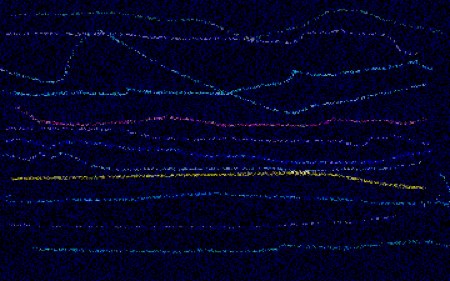Twelve Blue
Samantha Rose Panepinto

Michael Joyce’s “Twelve Blue”, a hypertext fiction by the author of afternoon: a story, explores the duality and the flow of life not only through the well-crafted segments of text but through its very structure.
Joyce begins one section by announcing there are “many ways to go over Niagara Falls”, illustrating a central concept of the story: that there are often many different ways to get to the same place. This idea applies to life in general, as Joyce elaborates through descriptions of maze-like roadways (all leading to Route 9), the motif of flowing water and a dose of religious skepticism – likening the mind of god, at one point, to the swirling mind of a drowning boy. Story segments comment on the scant control we have over our lives, not due to some divine plan but to life’s randomness and natural gravitations between certain people or things.
This interpretation is paralleled in the way the hypertext is set up: there are many ways to click through the links, thus giving the reader the illusion of choice, but there are very few options once a number is chosen at the beginning. We may take many different paths to reach conclusions, but we’re all reading the same story.
The narrative often splits or flows back, much like the rivers Joyce discusses. Points of interest for him are the brief moment a current flows in two distinct directions and the feeling of being overpowered by the river while either drowning or going over the falls, as people are overpowered by their lives’ flow.
“Twelve Blue” demands patient reading; time must be taken to appreciate the language and figure out how the different story lines relate. I found the story recalls the subtle lyrical style of Faulkner or Ondaatje. True, the meaning doesn’t jump out at you, but that’s what makes it appealing. The challenge of exploring the text and putting the meaning together through snippets of clues enhances the reading experience, and in this case parallels the central theme of human submission to life’s natural flow.
